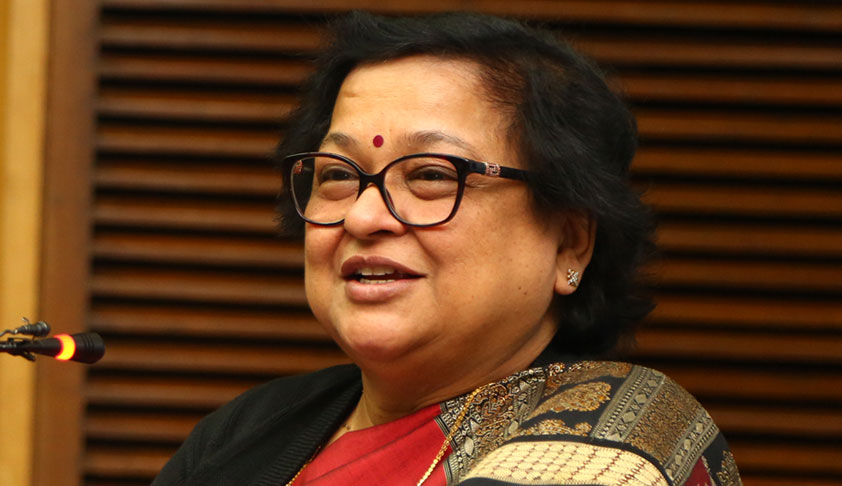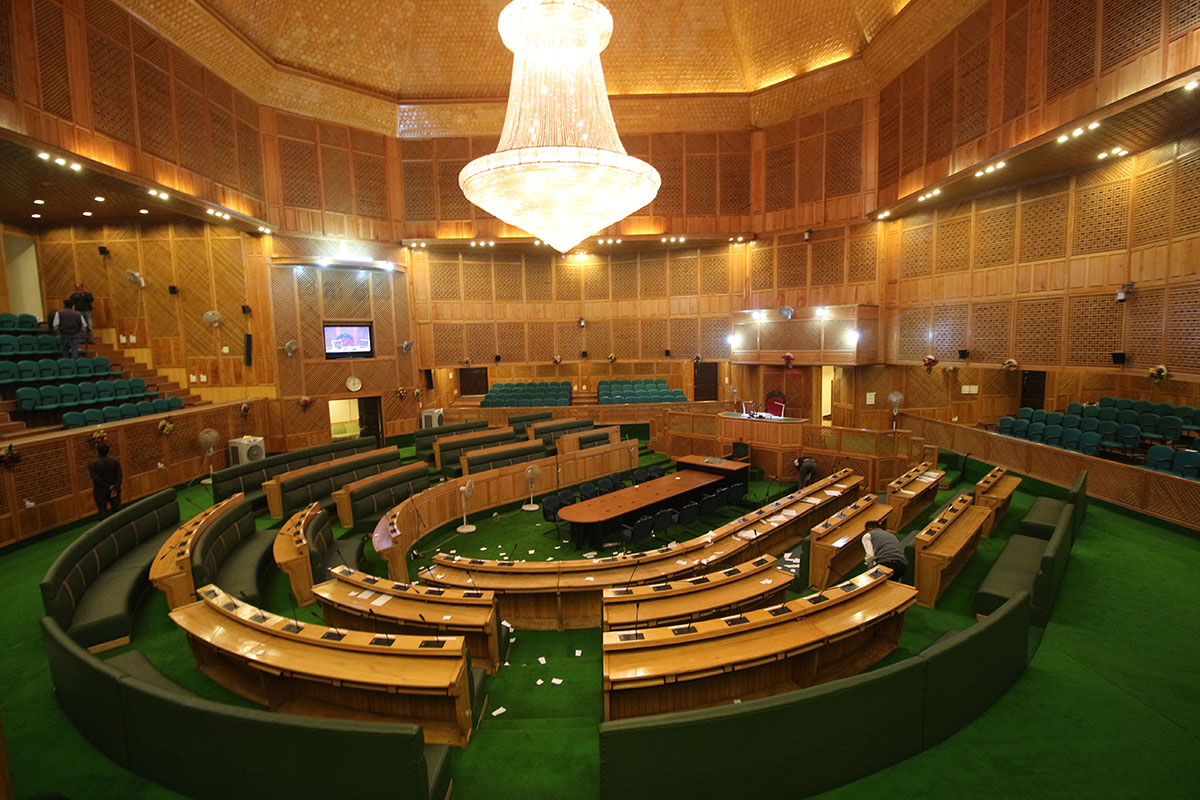The High Court verdict on a Public Interest Litigation (PIL) brought forth the serious crises the 2001 Roshni Scheme had. While the new set up must investigate it, the verdict should not be used to peddle a politics that does not exist on the ground, writes Masood Hussain

A Division Bench of the Jammu and Kashmir High Court, in a Public Interest Litigation (PIL) has ruled the all acts under the erstwhile Roshni Law as “unconstitutional” and issued a slew of directions for retrieving the vast tracts of land whose ownership has been vested to the encroachers. It has asked the Central Bureau of Investigations (CBI) to initiate criminal proceedings against powerful individuals for abusing the particular law to their benefit. It said the scheme promoted ‘loot to own’ and is an unprecedented piece of law that incentivised criminal activity.
The 64-page verdict has passed serious strictures against the people who enacted the law asserting the “object of the enactment is completely illegal and unacceptable.” The verdict says the “unconstitutional” scheme is illegal and “unsustainable”.
The bill was legislated during Dr Farooq Abdullah government on November 9, 2001, got Raj Bhawan assent, four days later. In the subsequent years, however, it underwent substantial amendments in 2004 and 2007. The major changes were impacted during Ghulam Nabi Azad government when it actually was converted into a sort of largesse asking revenue authorities to effect changes in the revenue records and deliver the allotment papers at the encroachers’ doorsteps for free. The law was repealed by the then Governor Satyapal Malik on December 7, 2018.
Controversies
More than 22 months after it was repealed, the Roshi has triggered the discovery of various dark tunnels that were created in its implementation. Some were identified by the petitioners and many are part of the judgement. In fact, the Comptroller and Auditor General (CAG) has given the tip of the iceberg in its March 2013 report.

The verdict has led to various tensions. Certain sections of the society are keenly seeing and exploiting it from communal and regional prisms. It has already emerged a political football. It is already a debate if at all the Jammu and Kashmir’s legislative assembly, till August 2019 the most empowered legislative body in India after the Lok Sabha, has resorted to something unconstitutional. It has taken the debate to legislature versus judiciary even though the House that legislated the impugned piece of legislation is neither empowered nor exists, right now.
Background
When the bill was presented before the House by the then Finance Minister, Abdul Rahim Rather, he gave a summary of the factors that led his government to go for a law that will regularise the occupation of state land by seeking money on market rates from the encroachers. The idea was to generate a corpus of Rs 25,000 crore for funding Greenfield energy projects.
It was a tough barter at a time when the state government was fighting militancy while trying to set up a major power project to showcase that it is actually working on bigger gaols like addressing the chronic energy deficit. It was after six painful years of anarchy and blood-letting that a civilian government started in Srinagar in 1996. The bunch of people ruling Jammu and Kashmir expected that Delhi will get some good money – sort of package – for rebuilding the infrastructure and helping the state to manage its development deficit. It goes to the credit of Dr Abdullah government that for the six years it actually rebuilt the basic infrastructure – the roads, bridges, key buildings, though the government lacked on many other fronts. This all was done within the squeezed fund flow from the central kitty and the Finance Commission.
By then, Dr Farooq Abdullah had laid the foundations of the 450-MW Baglihar (1). Not many people would remember that the government did not get even a penny for this project for all those years. It reached a level that one day; most of the funds meant for the State Plan were diverted to the project as no financial institution was willing to have any exposure to the project.
The financial institutions came with strange conditions. One consortium even had the cheeks to tell the state government that they can fund the gap only if the state government agrees for a lien on Consolidated Fund. This is something that has never happened in the history of any project in India. It was more of an insult and less of a bargain. Eventually, Dr Farooq government decided to sell the encroached spaces to the encroachers.
Though the Dr Farooq government laid the foundation stone of the project, did a bit of the spadework and the then baton of governance passed to Mufti Sayeed after 2002 elections. There were certain amendments in the Roshni law and the state government started creating strong institutional systems to implement the scheme. The Jammu and Kashmir Bank was asked to devise a financial product that people (read encroachers) can avail to pay for what they possess and to which they do not have rightful ownership. The product was advertised. While deciding about the product there were a series of discussions in which a lot of issues cropped up and were settled. It expected exposure of Rs 5000 crore with the launch of the scheme.
By then Mufti’s three years had elapsed.
While reviewing the scheme, twice in Ghulam Nabi Azad era, two sweeping changes were made. That killed the scheme and converted it into Kashmir history’s biggest land racket. Nobody knows why Ghulam Nabi Azad did it. But people who have some idea suggest that two officers had some influence on him who had told him that by making Roshni free, he will be as popular as Sheikh Abdullah (because of lands to tiller). He was allegedly told that the scheme will benefit more people in Jammu, especially the minorities and that will be a political windfall. That never was the case.
In Azad era, the Roshi became a list of rebates and discounts. If it is state land and already encroached upon, the government gave rebates to everybody – religious bodies, political parties, charity groups. No rebate was less than 75 per cent. In the second intervention, he changed the size of the land that encroachers can retain and took it to 100 kanals. In third intervention, he gave it free to farmers.
Tragically both the Congress-PDP Chief Minister’s had fiddled with the dates. The basic draft had a clear cut-off date but two later amendments changed the cut off date to 2004 and 2007. This led the influential in politics, bureaucracy and police to resort to new encroachments. All the rackets now being probed by the erstwhile State Vigilance Organisation (SVO) and the Anti Corruption Bureau (ACB) are the outcome of these two amendments.
Omar era skipped any attention to the Roshni scheme. However, the CAG report pricked the inflated balloon and created the major news of the era. It named names and exposed interesting cases. The top highlight were the party owned properties of NC and Congress – Nawa-ie-Subh Complex and Khidmat Trust. Both valued more than Rs 13 crore and got a rebate of more than Rs 10 crore. Though NC continues to have it as party property, the Congress owned trust is a personal property of its founding trustee.
Kashmir versus Jammu
After the High Court verdict, the narratives being built around is that Kashmir used the law to usurp the public resource, unlike Jammu. That is hugely incorrect. Even the High Court verdict has the details.
The verdict has used a starred question from the erstwhile state assembly that suggests that Kashmir has only 444299 kanals under encroachment in all its districts, unlike Jammu where the quantum of land encroached upon is four-time at 1602153 kanals.
The larger argument that a vested interested section is peddling is that Kashmir used militancy to encroach upon the state land. This might be a fact but it must show up. The fact is that the encroachments are four times more in areas which were peaceful.

The other side of the story is not being heard by anybody. Nobody talks about it actually. By the end of January 2018, the Jammu and Kashmir government had granted the rights over the property of 172244 kanals across the state. Of this, 10 districts of Kashmir had a total of 13772 kanals which is almost ten times less than 158512 kanals in Jammu. So where the benefits were reaped?
The other interesting part is at what cost. The January 2018 figures suggest that the Jammu and Kashmir government raised a sum of Rs 76.91 crore. Of this Rs 54.27 crore came from Kashmir and only Rs 22.64 crore came from Jammu. By an average, Jammu and Kashmir government sold a kanal in Kashmir for Rs 38522, unlike Jammu where it literally gifted a kanal at Rs 1428, less than 26 times the rate of Kashmir.
Investigate Please
Though this is not for the first time that the land is being “gifted” to the people, there are serious issues with the Roshni. It needs to be investigated and people must be held responsible. Let it start from the influential who are part of the governance structure and who are a huge beneficiary of this historic racket.
There is also a requirement for the administration to reassure the people who availed the facility provided by the law of land to acquire what they desired rightfully. Making these marginal landholders insecure by media blitzkrieg is in nobody’s interest. Srinagar city paid Rs 52.17 crore (67.83 per cent of the overall collections under the scheme) by taking ownership of 375 kanals (0.21 per cent of the land for which ownership was given under the scheme) and still it will be scandalised is unfair.

